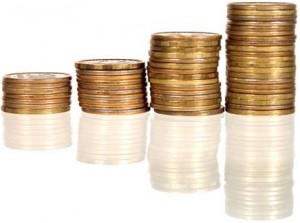Psychological Pricing, Decimal Points and the Lost Cents!
Tuesday, October 25th, 2011 8:27:53 by Awais Khan
Psychological Pricing, Decimal Points and the Lost Cents!
Psychological pricing is a pricing strategy based on the theory that certain prices have psychological impact. This entails prices that are a little less than the round number, e.g., Rs. 1499 or Rs. 99.95. This pricing strategy is followed because research shows that consumer tend to ignore the less significant digits especially when they are after decimal point and are printed smaller, e.g., Rs. 9995. Also such prices suggest to consumers that goods are marketed at lowest possible prices. Yet another reason is the perceived difference between prices. For example, the difference between 1499 and 1600 is perceived in many cases as close to 200 rather than 100.
There is nothing wrong with this pricing strategy as many producers and retailers tend to believe that this strategy drives more demand. The real question arises about the use the retailers make of this strategy to charge higher than they should and eventually make considerable profit.
Firstly, let’s see what happens to the portion of money that belongs to the consumer. When a consumer pays Rs. 100 for an item priced at Rs. 99.95, she or he does not expect to collect the remaining 5 paisa, no problem there. But lets the take the example of the other price I mentioned viz. Rs. 1499. If I pay Rs. 1500, how often does the retailer return Re. 1? If he doesn’t, how many people ask for it? Very few in fact and with hundreds of products selling each day, the shopkeepers go on to make thousands in undue profit only adding up the rupee they did not return.
If most of your products are priced under this strategy, it will require availability of lots of coins on daily basis. This appears to be a hassle for retailers and hence they deal in candies instead. They get to ‘sell’ packets and packets of candies everyday simple because they don’t have coins. And if people feel shy in asking for one rupee imagine the likelihood of the same people asking for a rupee instead of the candy!
Unfortunately, there are instances when rounding off gets worse and this is done all across the country at gas stations. Mostly the amount payable is in decimals and consumer is made to pay the next round number instead of the actual rounded figure. For example if the amount is Rs. 432.21 or Rs. 432.71, gas station charges Rs. 433 when in fact the round off in the two cases should be Rs. 432 and Rs. 433 respectively. This is being shamelessly done because consumers do not ‘create a scene’ over a few cents. Now think of all the traffic at a busy gas station and imagine what the extra cents add up to at the end of the day!
Actually, the whole rounding off thing and making profits on the pretext of unavailability of paisa and coins is a habit for retailers. Whenever I get my tank filled, I pay via credit card. Now, we can’t deal in cents if I pay cash, fair enough. But cents can be entered into the credit card charging device and yet the amount is rounded off in the favour of the station.
I frequently visit a particular Shell filling station and after my credit card payment was rounded again and again, I refused to sign the slip every time and then they had to pay me back in coins which of course handed me the extra cents. After this happened a couple of times, I saw something completely new at the very gas station. The management took out the decimals from the counters and no matter how much fuel went in, the dispenser will only show whole numbers. For all I know they could be rounded numbers or the next number as soon as it became .01.
If I and a hundred others lose a few cents every 3 or 4 days it does no harm. If fuel stations make thousands every month due to this kind of charging, it doesn’t really improve their financial health, but what matters is that is not ethically correct and it about time we realized it.
Short URL: https://www.newspakistan.pk/?p=1424

















